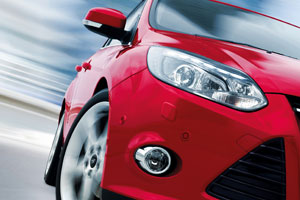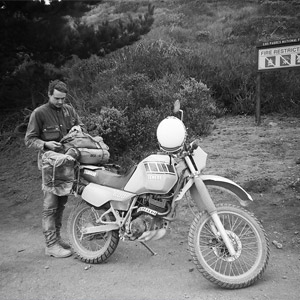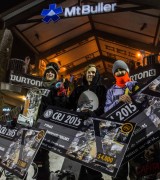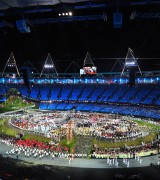You can’t watch Ken Block do his Gymkhana thing and not be a little interested in what Ford is up to with their small to medium cars at the moment. Block’s latest creation, the adapted Fiesta called H.F.H.V. which covers several different driving competitions in one car, piqued that interest for me and when Ford called with the opportunity to drive the 2011 Focus, I was all about it.
First up, I should clarify that while the body shapes are similar, that’s about the extent of the similarity between what I was driving and what you see KB throwing around the track. I had the 2.0-litre turbo diesel Focus Titanium to drive. For those unfamiliar, it’s a medium format four door hatch back… In the past, the Focus has really been the pick of the bunch for cars in this style. Take it from a former Astra owner, I wish I’d gone the Ford. And I think the trend is set to continue with this being a lot of fun to drive. There is a little lag when you put your foot down but no worse than any other diesel I’ve driven and once it’s going there’s no issues with pick up for dealing with city traffic.
However, the real draw card for this car is the technology. They didn’t hold back on this front. I’ll start with the comfort features – the Bluetooth sync’s seamlessly with my iPhone even giving me battery life and reception on the centre console. It can play my iTunes library over Bluetooth (in stereo – something a lot of factory fitted systems can not do) and it remembers if I was listening to my iPhone when I get out and resumed play when I get back in again… Impressive. The whole thing, plus the individual climate controls and more can be controlled through voice commands. These were a little clunky at first but once you had the command flow in your head it became easier. The car has a perimeter locking system meaning you can get access and start the car without touching the key, it just stays in your pocket. I loved that feature. The car can parallel park itself and I’ve seen this demo’d but I didn’t get the opportunity to give it a go myself. It does have an adaptive cruise control system which is basically a set and forget speed control – the car gauges the distance between you and cars in front and maintains a safe distance. When you pull out to overtake, it resumes the speed you set earlier. This was awesome for a long freeway drive and is perfect for trekking from Melbourne to Buller or Hotham. Another unique feature of the radar is a collision alert system which very nearly caused one the first time it went off. The car judges closing speed and distance with other traffic around you, at some point it decides that you’re in danger of a collision and the screen on the dash flashes orange and an alarm goes off. This is a great idea but I hope it is customizable – it could be just my driving but the alarm seemed to sound quite frequently in heavy traffic.
Finally, cabin layout. The car was amazingly comfortable to drive and had a layout that suited a driver who is over five foot tall (something I have found a problem with some comparable cars – I’m looking at you Cruz with your air control right where my left knee sits). The dash and steering wheel was awash with buttons, there was some unnecessary duplication and some things that could have been simplified but the fact that I was in the car less than 10 minutes before I had 95% of the features dialed in to my own preference and was already making phone calls over the cars system means that it must be relatively intuitive to use, so I can’t really complain. As someone who likes to get things done while I’m in traffic, this car was perfect, it was easy on the juice and a pleasure to drive. The Titanium model I drove is priced at $32,950. Check below for more details on the car.
Price: $32,590 – Titanium
Safety: 5-star ANCAP
Available Engines: 1.6-litre petrol, 92kW/159Nm; 2.0-litre turbo diesel, 120kW/340Nm; 2.0-litre petrol, 125kW/202Nm
Weight: 1311-1543kg
Transmission: 5-speed manual, 6-speed Powershift DSG, front-wheel drive
Consumption: 5.5-7.2L/100km, 95RON/diesel, CO2 144-167g/km





































